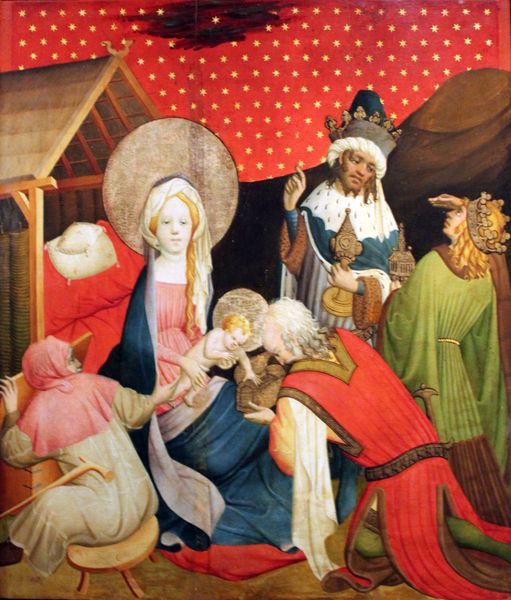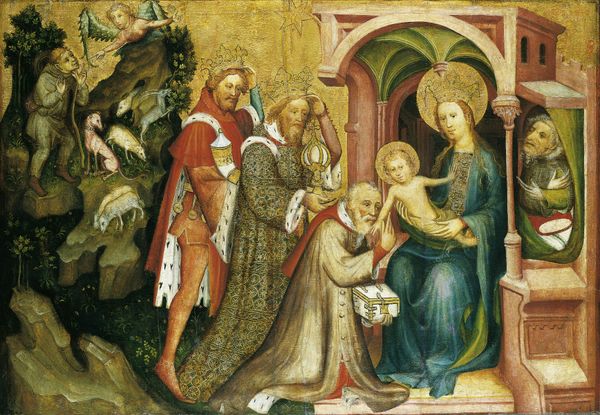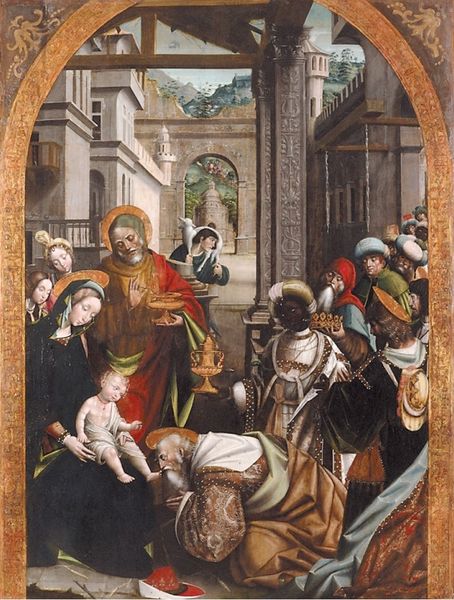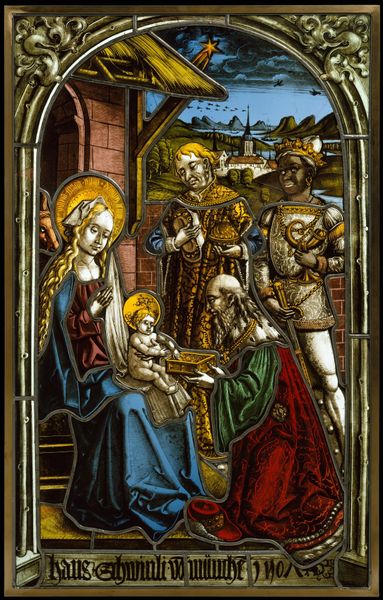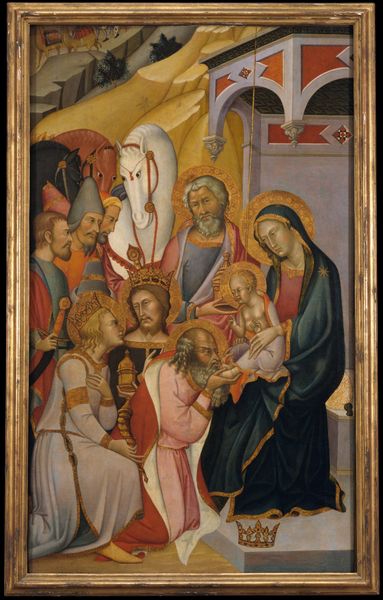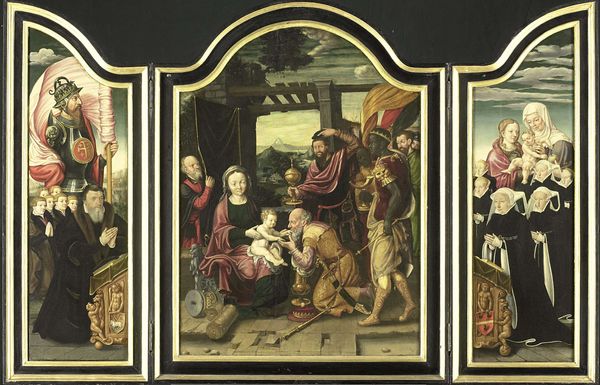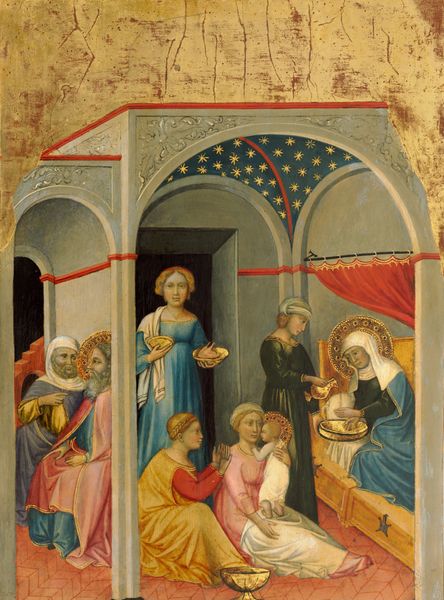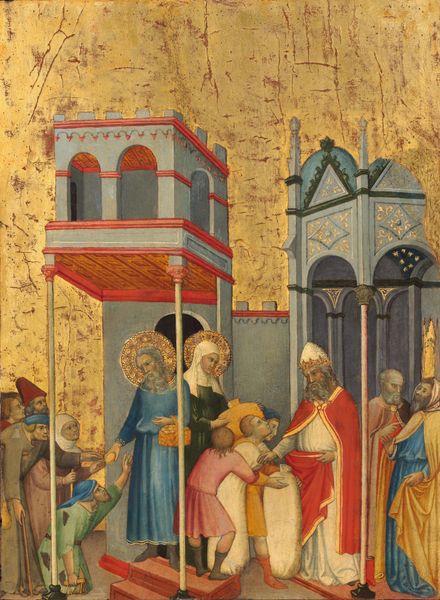
Adoration of the Magi from the St Thomas Altarpiece 1424
0:00
0:00
masterfrancke
Kunsthalle Hamburg, Hamburg, Germany
tempera, painting
#
portrait
#
medieval
#
narrative-art
#
tempera
#
painting
#
figuration
#
oil painting
#
group-portraits
#
history-painting
#
international-gothic
#
portrait art
Copyright: Master Francke,Fair Use
Curator: What strikes me immediately about this tempera on panel is its opulence; all of those dazzling colors seem laid on with great deliberation. Editor: Indeed. The "Adoration of the Magi" by Master Francke, dating back to 1424, pulses with the rich artistic traditions of the International Gothic style. It originally formed part of the St. Thomas Altarpiece. Curator: It is certainly a striking combination. I’m immediately drawn to how the gold leaf practically vibrates against the red background. I'm curious about the source of the pigments and how they influenced the final form of the painting. Editor: Well, tempera allows for precision; however, the societal influences here are also interesting. Altarpieces, especially during this period, had such a central role within the church as visual tools used for didactic purposes, shaping and solidifying religious beliefs among a largely illiterate population. Curator: Do you think, with such elaborate clothing, the aim was to illustrate luxury and splendor through the use of expensive pigments and detail? What kind of patrons could afford art crafted using such intensive labor? Editor: Absolutely. Think about the guilds controlling pigment production. They wielded considerable power. Consider how materials—the cost of ultramarine derived from lapis lazuli—served as potent signifiers of status. Curator: You're right. When considering production of art during this period, it is always fascinating to imagine who was being commissioned to depict such scenes. Beyond its visual appeal, an altarpiece commission signified cultural relevance and affirmed social standing. Editor: Right, because even the stylistic choice points back to power. Note how, despite being a religious scene, the figures and patterns reflect elite courtly fashion. International Gothic style flourished precisely because it was sought by wealthy patrons eager to flaunt wealth and taste. Curator: Examining this painting with that in mind shifts my focus. I had been focusing on the way this artwork would've been originally crafted but seeing it this way certainly adds a new level of context for interpreting its original use and audience. Editor: Understanding the material conditions can highlight this complex interplay between religious devotion and the projection of temporal power. What looks ornamental is actually very central to interpreting art's evolving role within the larger society.
Comments
No comments
Be the first to comment and join the conversation on the ultimate creative platform.
